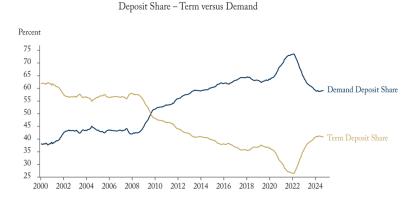In this edition of Graphic Intelligence, we provide a comparison between Canada and the rest of the developed world in the attempt to answer a pressing question: What causes the gap between Canada’s household debt ratios and those of its peers?
Canadian household debt levels continue to attract a lot of attention, but not the good kind. They are notoriously high in comparison to other countries. Our recent Intelligence Memo highlights the differences between Canada and Germany, a G7 peer with significantly lower household debt ratios.
In Figure A, both GDP and disposable income for the two countries have grown at the same pace, meaning the answer to our question lies in the numerator, i.e. household debt.
So we need to look at both the demand and supply sides. Strong labour force statistics in both countries (Figure B) - including strong participation rates above the OECD average – implies the answer on the demand side lies elsewhere.
Homeownership rates can explain some of the demand-side differences (Figure C), as more Canadians own houses and hold mortgages than Germans, resulting in Germans holding less aggregate debt. The other part of the explanation comes from the supply side, as Figure D shows Germans with a healthy spread – 20 percent - over Canada in the total number of dwellings per 1,000 inhabitants. This spread is in part due to significant regulatory barriers faced by Canadian cities. Click on the different tabs above to see the figures.
To learn more about how Canada compares to Germany and the rest of the developed world when it comes to aggregate household debt, see “Housing Supply is the Fix to High Household Debt” by Jeremy Kronick and Nikki Hui.




